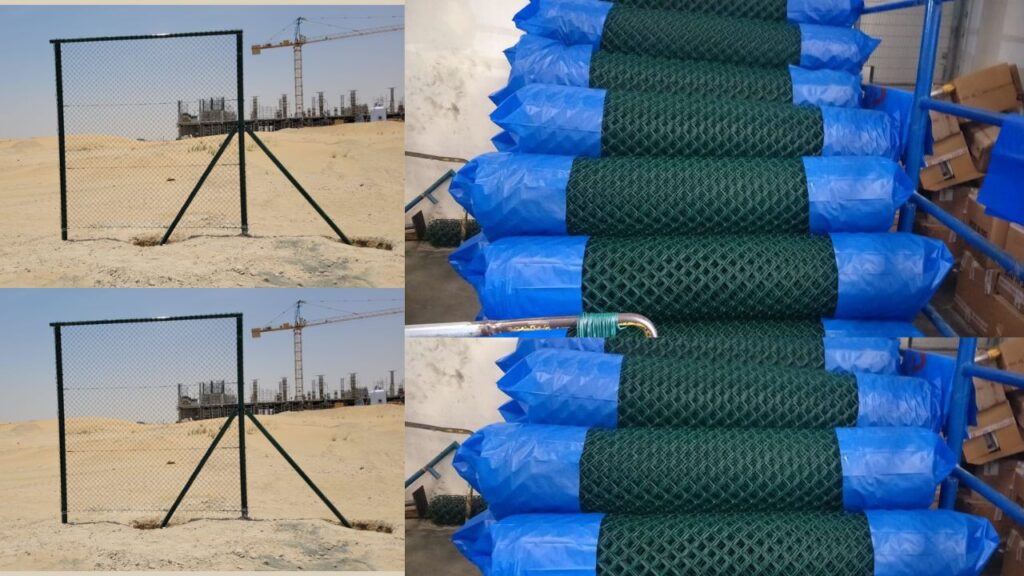Chain Link Fence: Construction, Applications, Benefits and Pricing
Chain link fences are widely used for their versatility, durability, and affordability. They provide a practical solution for a variety of applications, including residential, commercial, and industrial settings. In this article, we will explore what chain link fences are, how they are made, their applications, the benefits of using them, and factors affecting their pricing.

- What is a Chain Link Fence? A chain link fence consists of a woven mesh made of galvanized or coated steel wires formed into a diamond pattern. These wires are interconnected to create a sturdy and flexible fencing system. The mesh is supported by posts and secured to the ground with tension wires or concrete footings. Chain link fences come in various heights and gauges, providing options for different levels of security and functionality.
- Construction of a Chain Link Fence: The construction process for a chain link fence involves the following steps:
- Planning: Determine the fence’s purpose, dimensions, and layout, taking into account any local regulations or property boundaries.
- Clearing and Marking: Clear the area of any obstructions, mark the fence line, and install corner posts and line posts at regular intervals.
- Digging Holes: Dig post holes to the appropriate depth and size, considering the fence height and local soil conditions.
- Setting the Posts: Place the posts in the holes, ensuring they are level and plumb. Secure them with concrete or gravel.
- Attaching the Rails: Connect the top and bottom rails to the posts using tension bands and brace bands.
- Installing the Mesh: Unroll the chain link mesh along the fence line and attach it to the rails using tension bars, wire ties, or hog rings.
- Adding Gates and Accessories: Install gates, gate hardware, and any additional accessories, such as privacy slats or barbed wire, as needed.
- Applications of Chain Link Fences: Chain link fences have a wide range of applications, including:
- Residential Use: Providing security and boundary definition for backyards, gardens, and pet enclosures.
- Commercial Use: Securing commercial properties, construction sites, parking lots, or storage areas.
- Recreational Use: Establishing boundaries for sports fields, playgrounds, parks, and recreational facilities.
- Industrial Use: Securing industrial sites, warehouses, factories, or utility installations.
- Benefits of Using Chain Link Fences:
- Affordability: Chain link fences are cost-effective compared to many other fencing options.
- Durability: The galvanized or coated steel wires make chain link fences resistant to rust and corrosion, ensuring long-term durability.
- Low Maintenance: Chain link fences require minimal maintenance, typically limited to occasional cleaning and repairs.
- Versatility: They can be customized with various heights, gauges, and accessories to suit specific needs.
- Visibility: Chain link fences offer visibility, allowing for surveillance and maintaining openness while providing a physical barrier.
- Pricing Factors: The cost of a chain link fence can vary based on several factors, including:
- Fence Height and Length: Taller and longer fences require more materials, impacting the overall cost.
- Gauge and Coating: Different gauges (thicknesses) and coating options (galvanized or vinyl) affect the price.
- Additional Features: Accessories like gates, privacy slats, or barbed wire will increase the total cost.
- Installation: Professional installation services may incur additional charges.
Chain link fences are versatile, durable, and affordable solutions for a wide range of applications. With their simple construction process, they can be installed with relative ease. The benefits of chain link fences include their low maintenance requirements, customization options, visibility, and cost-effectiveness. When considering pricing, factors such as fence height, length, gauge
Comments are closed.